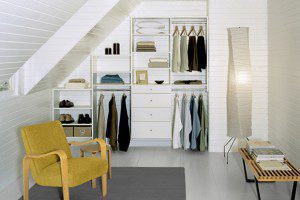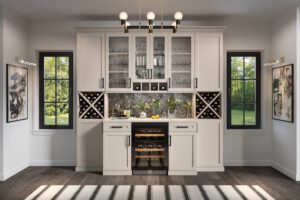From Cradle to College: 9 Tips for Designing a Closet That Will Grow With Your Child
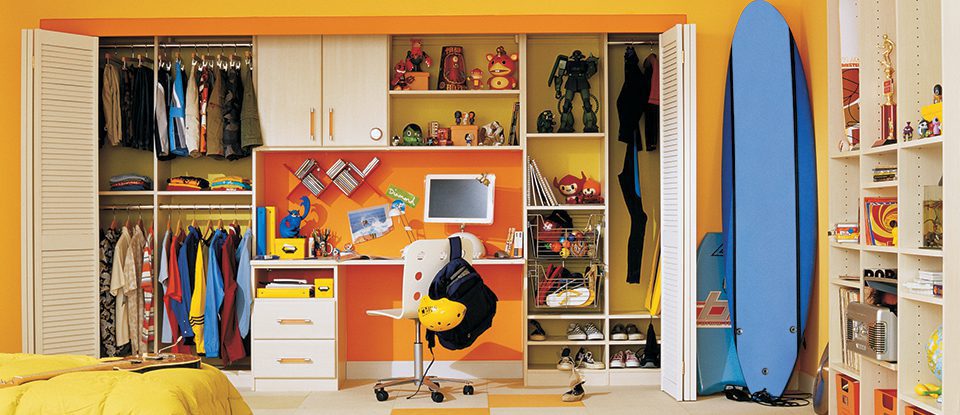
A custom closet is an investment that can last a lifetime. When it comes to a closet for kids, it’s especially important to design a system that can transform over time because the needs of a child change as they grow from infant to toddler to teen.
To get the most out of your child’s closet system, choose features that are adaptable. Follow the tips below to create a system that will encourage your child to keep their room neat and organized through accessibility.
Outfitting the Nursery Closet
Think ahead with adjustable features
When you plan ahead in a space, it allows you to see how various systems will fit in a certain area. An open space for a changing table can convert into a place for wire baskets and cabinetry for a toddler, or a desk once a child is in school. A baby or toddler may have three tiers of hanging rods because they have small clothes. When a child gets bigger, however, you can remove one rod to accommodate larger clothing and create more storage space for other items.
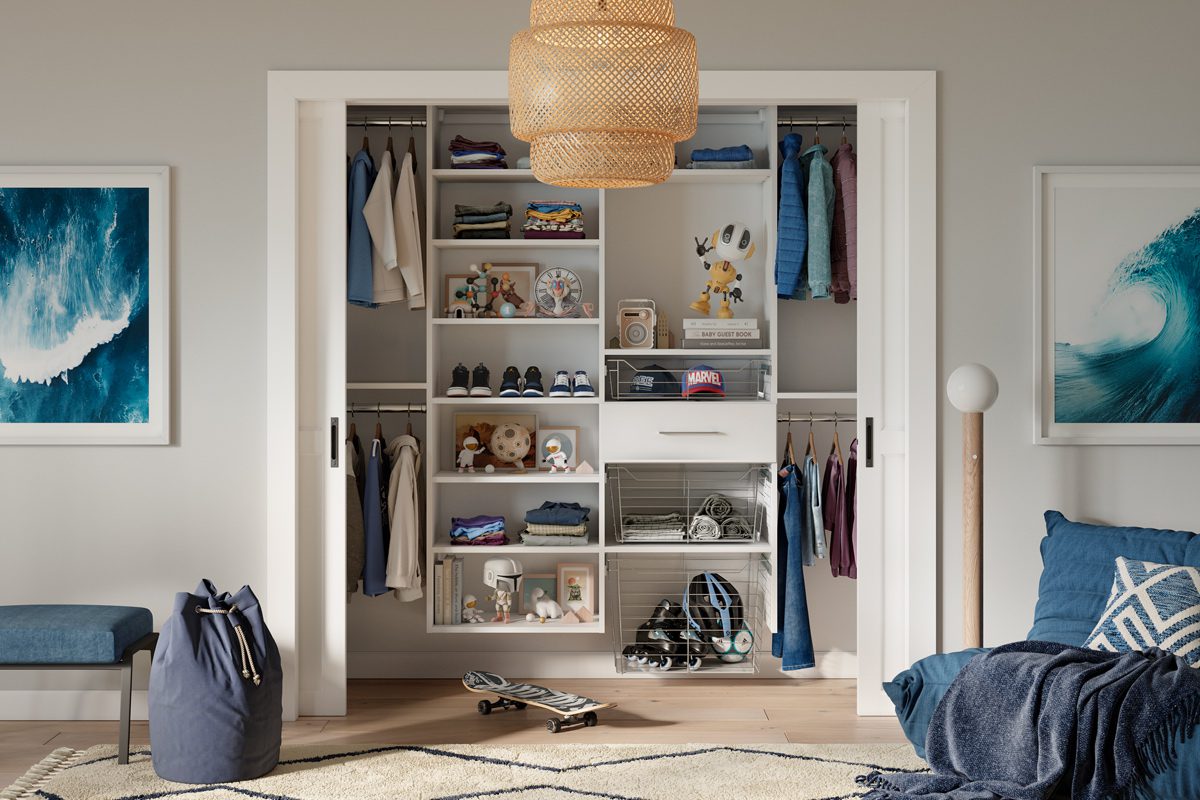
Stay away from closed drawers as much as possible
Babies have a lot of little things, such as socks, pacifiers and hair bows. If all of these items are in a big drawer, it can become very messy. Plus, you won’t know what you have if these things are out of sight. Keep your baby’s items visible with baskets that can be used later for toys and clothing.
Include cubbies for stacked items
A new parent will go through a lot of diapers, diaper cloths and onesies. Keep these items near the changing table, within easy reach. Cubbies can be used later for a child’s toys.
Transitioning into the Toddler Years and Beyond
Create hanging tiers
Utilize the three-tier system you established in the nursery as your child grows. As children explore their independence and self-sufficiency, you can start to teach them how to dress themselves and keep things neat. The secret is creating accessibility for particular items. For example, put the clothing you want them to dress themselves in on the bottom tier, then store holiday attire and other formal clothes above and out of reach.
Create storage for toys and books
Some people think that shelves are the way to go, but for children, bins are a better idea. A child can dump the contents out on the floor and play. When he or she finished, everything goes back in the bin, and the bin gets tucked away. This process makes it easier for a child to understand how to clean up. Plus, it makes cleaning up much faster for a child or parent.
Opt for baskets are better over drawers
When you store clothing in drawers, kids often stick their arms in and pull everything out, making a mess. With baskets, they can easily see their favorite pajamas, T-shirts and so on. This is especially helpful when they are trying to locate a cherished clothing item.
Adapting a Space for a Teen
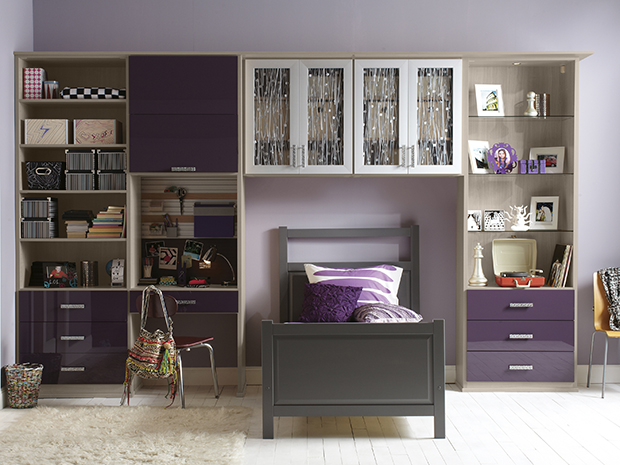
Let the space reflect them
As a child’s independence grows, it’s important that he or she has a room that feels comfortable and personal. Because of this, when you’re investing in kids playroom storage, it’s important that it can adapt aesthetically and functionally. Changing out drawer and door faces, or swapping in new hardware is a very inexpensive way to redesign the entire look of the room to reflect a child’s evolving personality.
Provide privacy
It’s important to provide drawers and cabinets as a place for personal items. Teens need privacy when inviting their friends over to spend time or do homework.
Ensure functionality
Small children will primarily use their rooms as play areas, but a teenager may do homework, watch TV, play video games and work on crafts in his or her space. To maintain minimal clutter in your teen’s room, work with him or her to create a designated place for important items. When adapting a space for a teen, some things to ask include: Where is the charging station? Where should the book bag be stored? Help your teen start thinking about the things that will help him or her stay organized as an adult.



